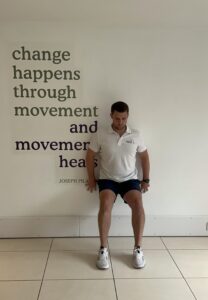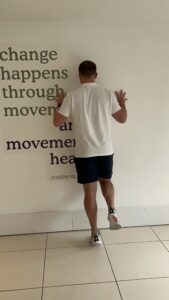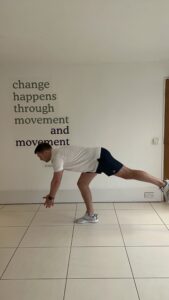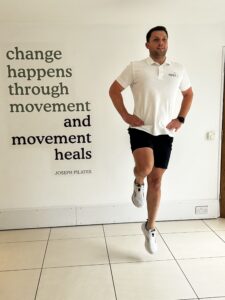Written by Sam Wells, Clinical Manager & Physiotherapist
It’s that time in the year when your kids are enjoying their well deserved summer breaks from school and the sports season. But what can they be doing throughout their time off to look after their bodies and help prevent any overuse injuries once they return to their busy sport schedules in September?
This blog will discuss three common overuse injuries for the lower limb and which key exercises to perform during the off season to help injury prevention.
Overuse injuries or repetitive stress injuries can occur with a sudden change in an individual’s training load or exercise routine. We see this commonly at the start of pre season or when returning to a busy school schedule of sport too quickly after a period of inactivity.
This sudden increase in training loads can cause excessive stress on the body’s tissue which can cause inflammation, muscle strains or tendon irritation. In adolescents, these overuse injuries most often occur at growth plates (the area at the end of bones which enable further growth with age). Typically we see this in the longer bones, at joints such as the ankle and the knee.
Knee: Osgood Schlatters Disease (OSD)
This is the irritation of the growth plate at the top of the shin bone underneath the kneecap. During growth in adolescents their bones, muscles and tendons will develop at different rates. In OSD the tendon from the kneecap is pulling on the shin bone’s growth plate, the repetition of this action during sport activities can cause inflammation.
Symptoms will present with pain, swelling and sensitivity to touch under the kneecap. These symptoms can be aggravated with running, jumping, going up stairs and kneeling.
This can be managed with activity modification and regular icing for 15 minute intervals to desensitise the inflammation post exercise. However, most important is seeking a specific strength programme to improve muscle conditioning, control and mobility
.
Lower leg: Shin splints
This refers to pain most commonly along the inner edge of the shin bone (the Tibia) and medically diagnosed as Medial Tibial Stress Syndrome. The pain occurs from repetitive stress on the lower leg causing inflammation of muscles, tendons and connective tissue pulling on the superficial layer of the bone (the Periosteum). If left untreated and the individual continues with their impact activities there is the risk of a tibial stress fracture.
Symptoms will present with pain along the shin border, it can be either sharp or a deep ache sensation. These symptoms will become worse during and after activities. There may be some visible swelling and a localised area of sensitivity to touch.
Management will involve a period of rest from activities and ice to desensitise the pain. Lower leg conditioning with calf stretching and strengthening is important to increase the loading response of the connective tissue.
Ankle: Tendinopathy
Tendons are strong bands of connective tissue which attach muscle to bone, they store and release energy to produce movement. Tendinopathies refer to a breakdown of a tendon’s structural matrix, losing its ability to lengthen and shorten under load. This breakdown could be a result of failed healing after repetitive stress or inflammation.
In the ankle, common tendinopathy sites include the Achilles tendon above the heel bone and the Peroneal tendons on the outside of the ankle. Symptoms will present with pain over the specific tendon site, increasing during activity or load. There may be some swelling or thickening of the tendon and symptoms may be worse in the morning or at the beginning of exercise.

Injury Prevention
Performing a regular strength programme twice a week will help provide the body with the sufficient tissue tolerance needed to cope with the return of repetitive impact sports such as Netball, Hockey, Football and Rugby.
These 6 simple home exercises will target key muscle groups to develop the load tolerance and dynamic strength of the body’s tissues. This will help prevent the risk of sustaining one of the common overuse injuries previously discussed in this blog
Home Exercises






If you have any queries for our Physiotherapists on injury prevention for kids and adolescents, please do get in touch at hello@appiclinics.com or you can book your child for a personalised assessment to address any injury prevention or treatment options.

